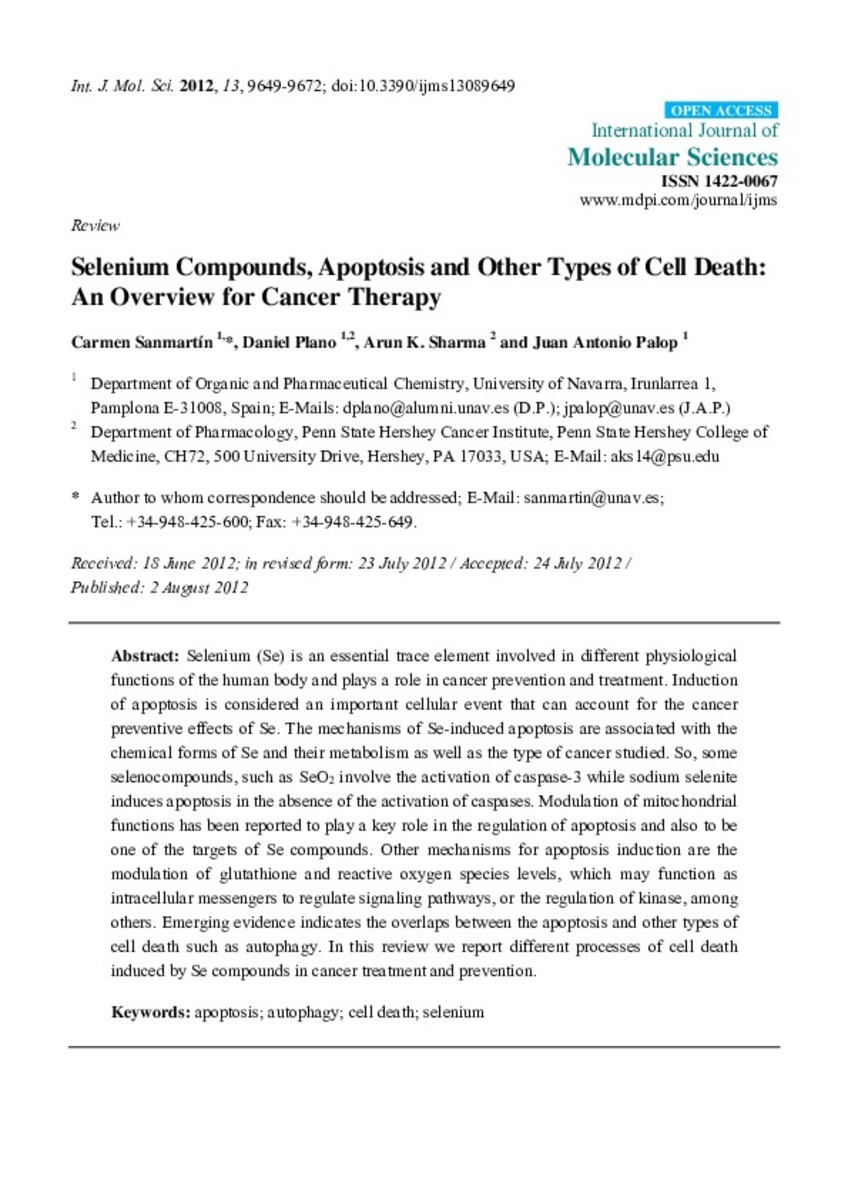Selenium compounds, apoptosis and other types of cell death: an overview for cancer therapy
Palabras clave :
Apoptosis
Autophagy
Cell death
Selenium
Materias Investigacion::Farmacia::Química farmacéutica
Materias Investigacion::Química::Química orgánica
Fecha de publicación :
2012
Cita:
Sanmartín C, Plano D, Sharma AK, Palop JA. Selenium compounds, apoptosis and other types of cell death: an overview for cancer therapy. Int J Mol Sci. 2012;13:9649-9672
Aparece en las colecciones:
Estadísticas e impacto
0 citas en

Los ítems de Dadun están protegidos por copyright, con todos los derechos reservados, a menos que se indique lo contrario.







